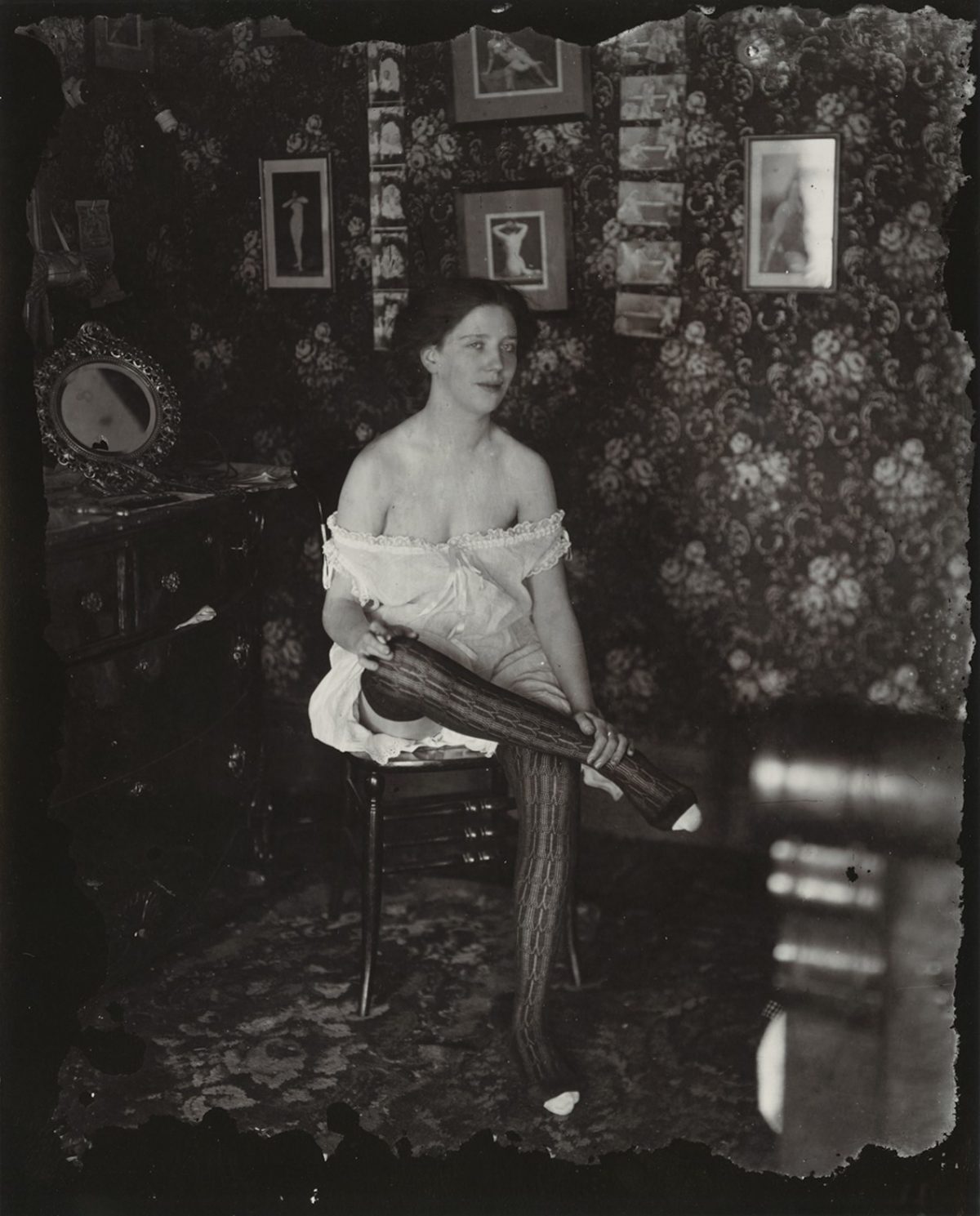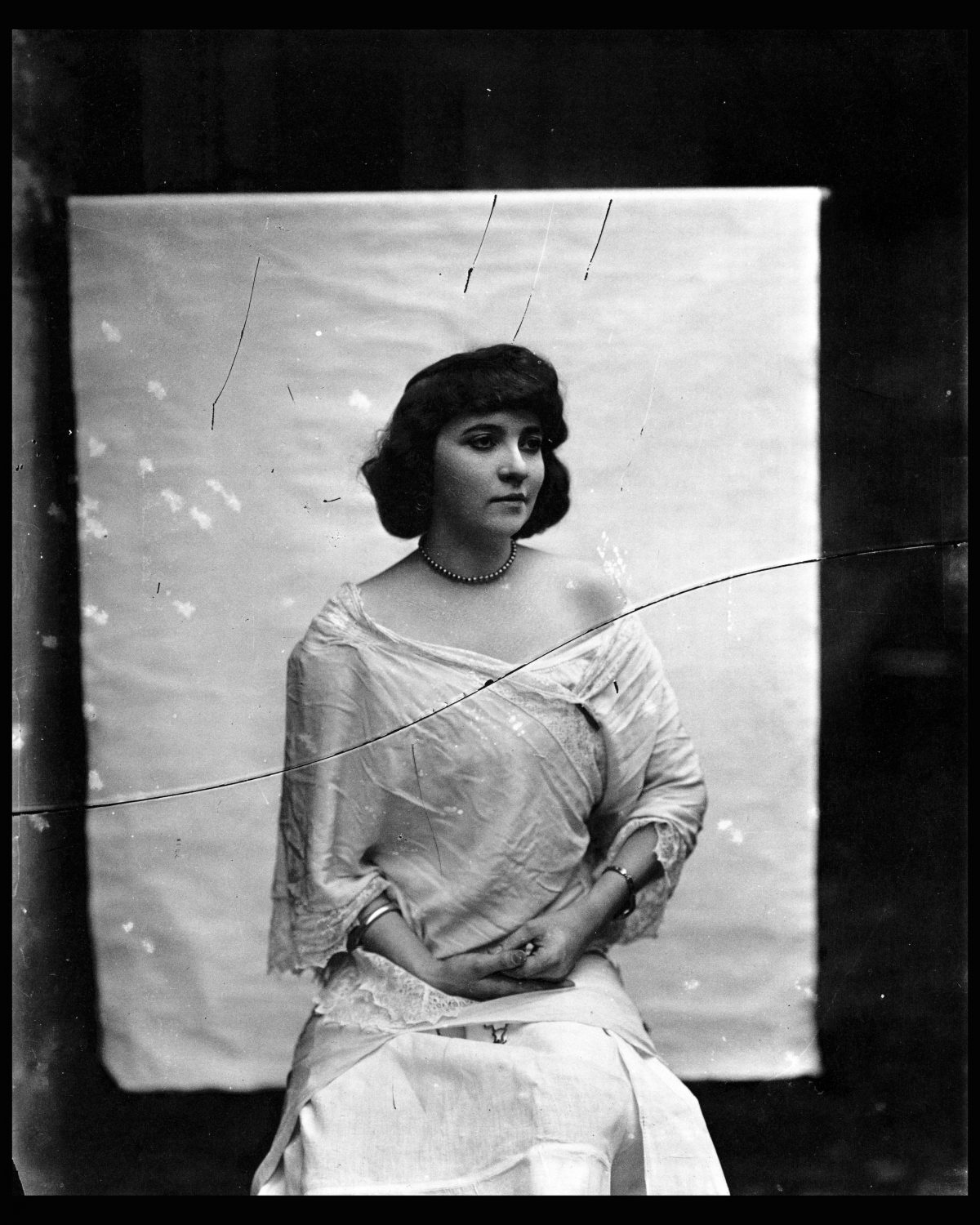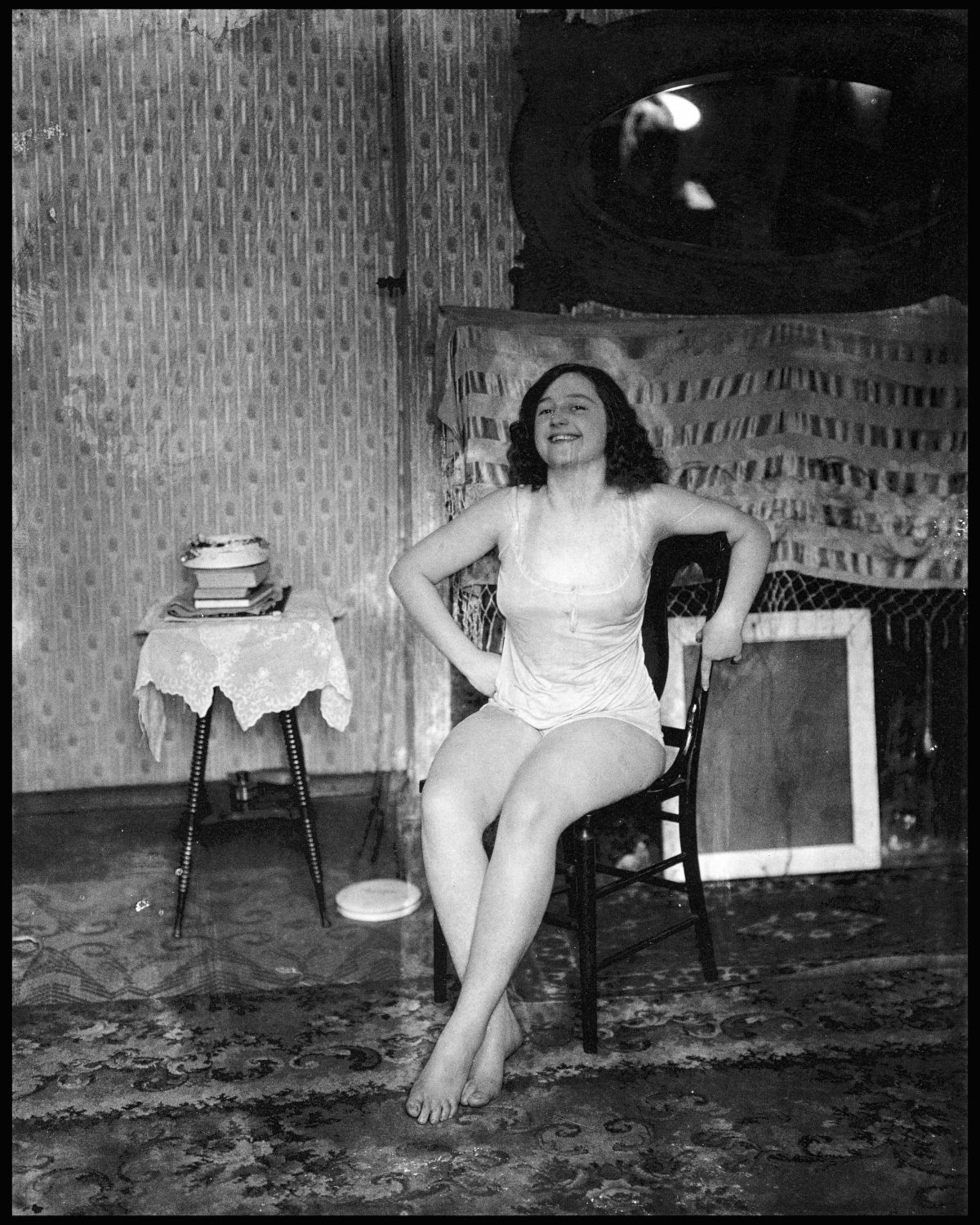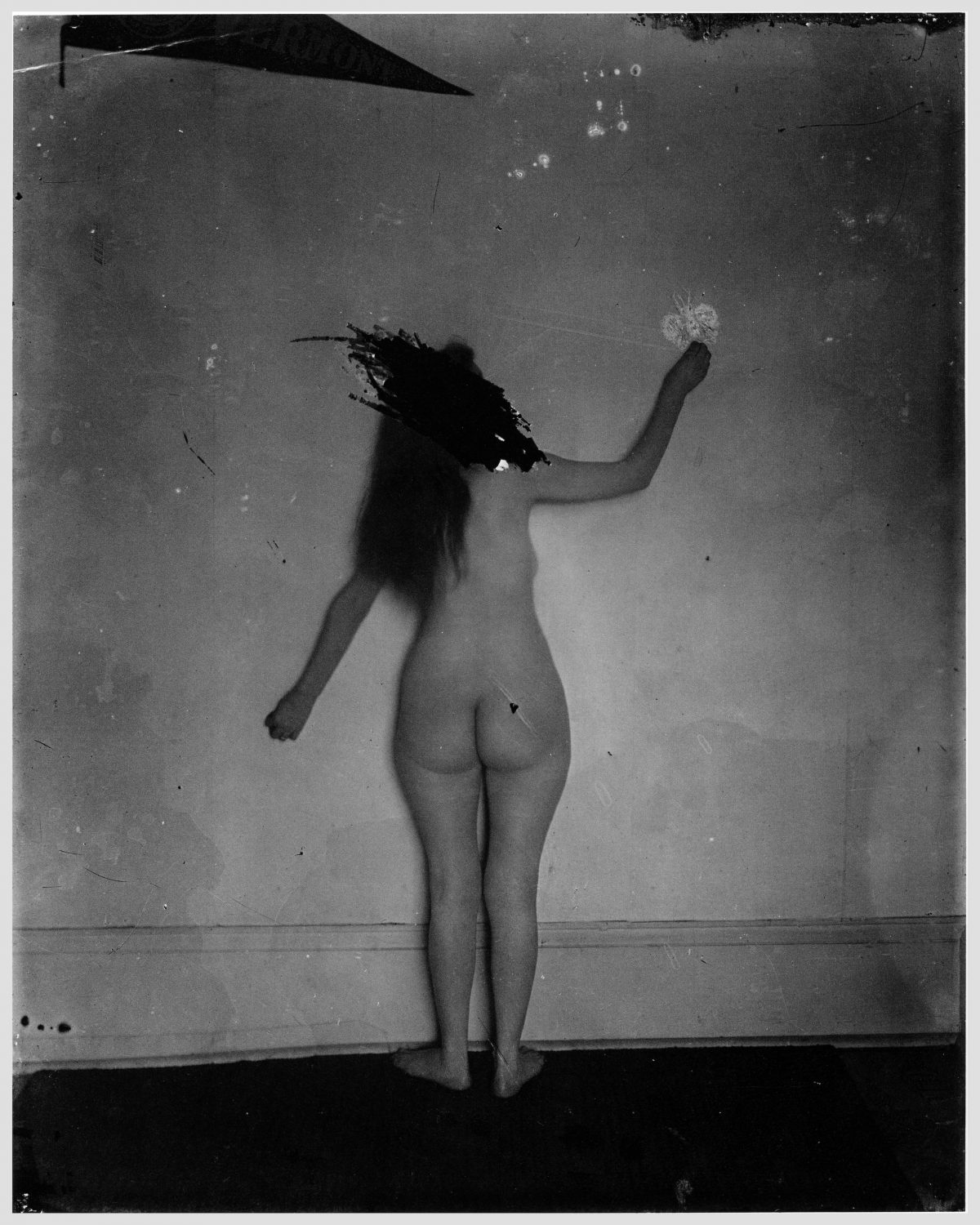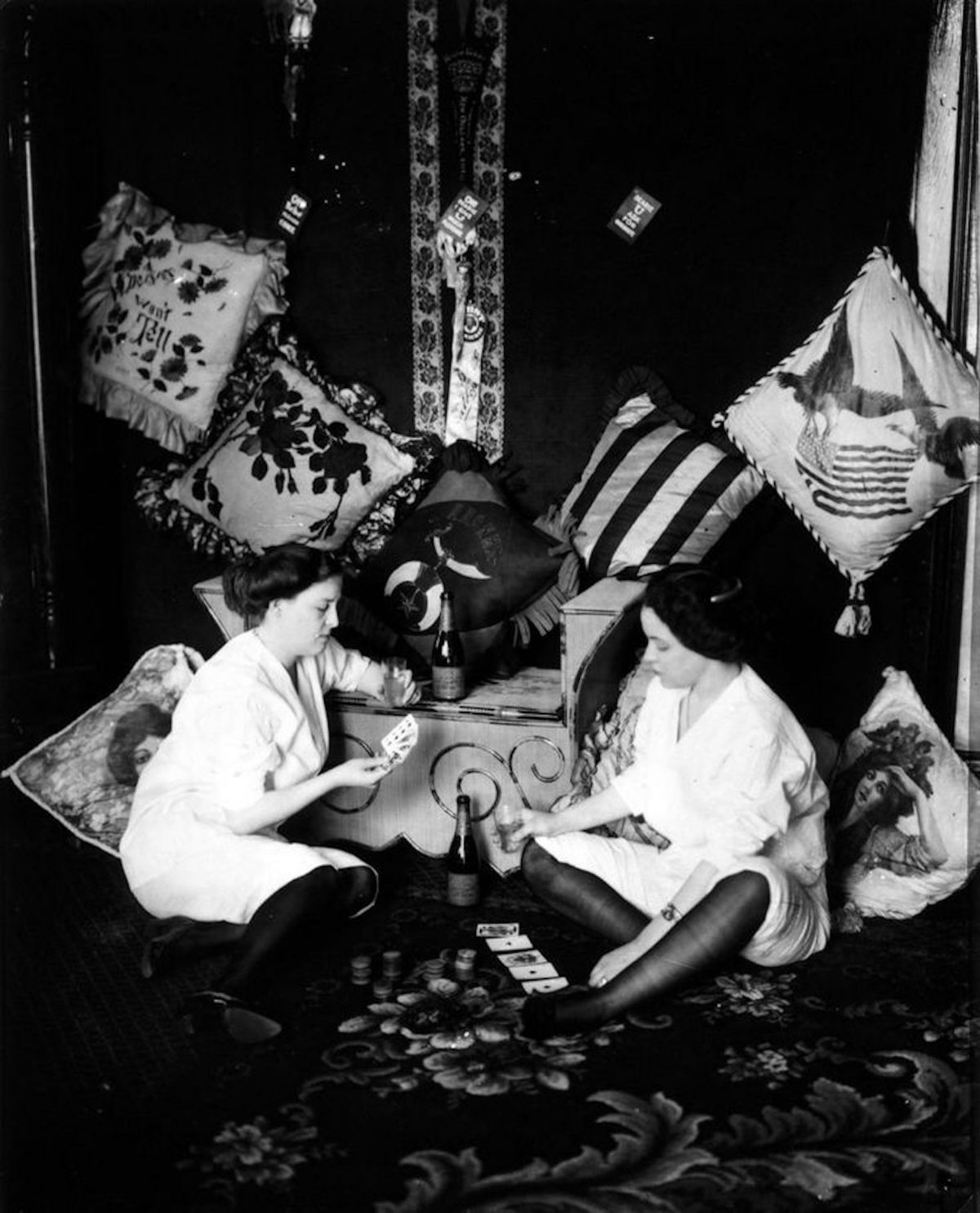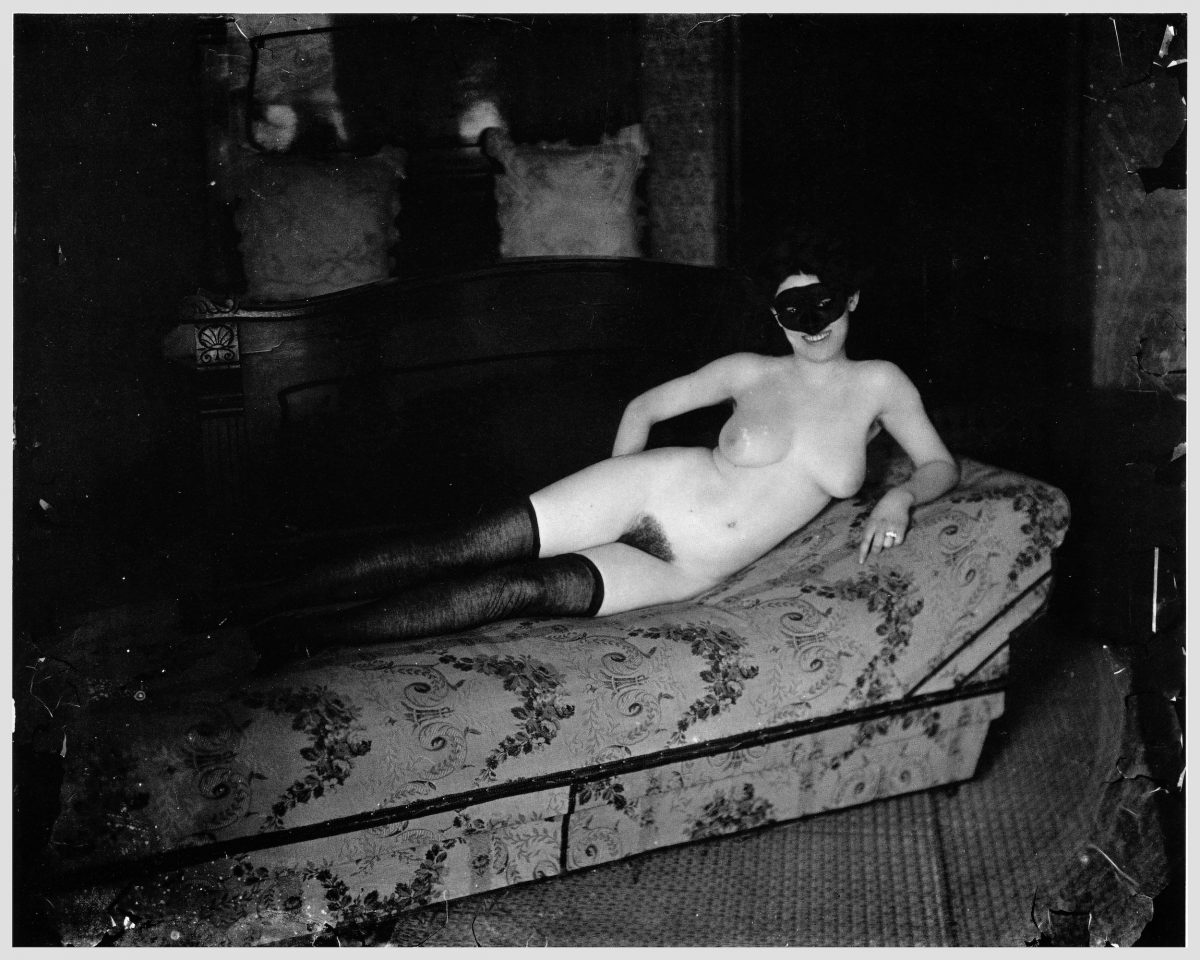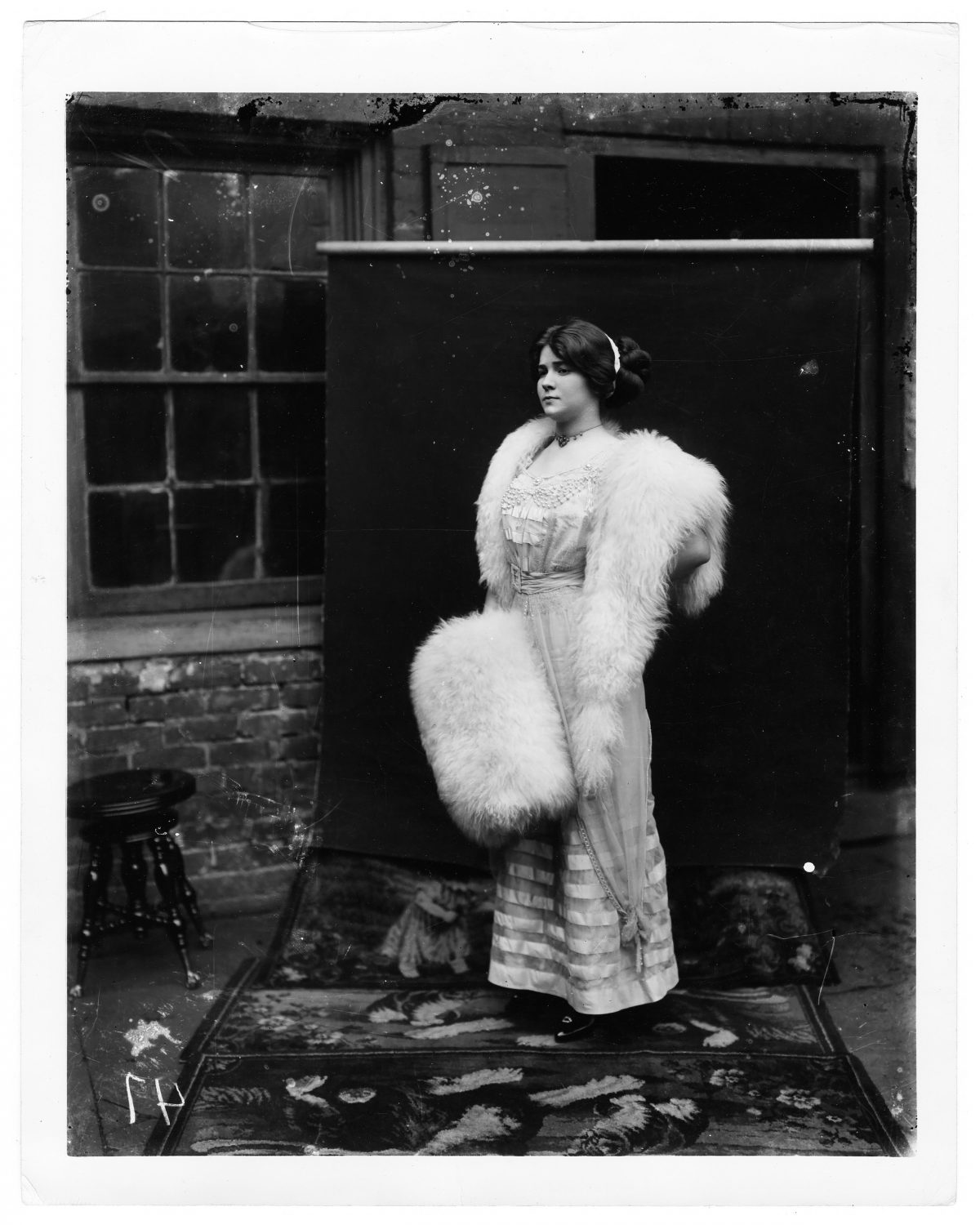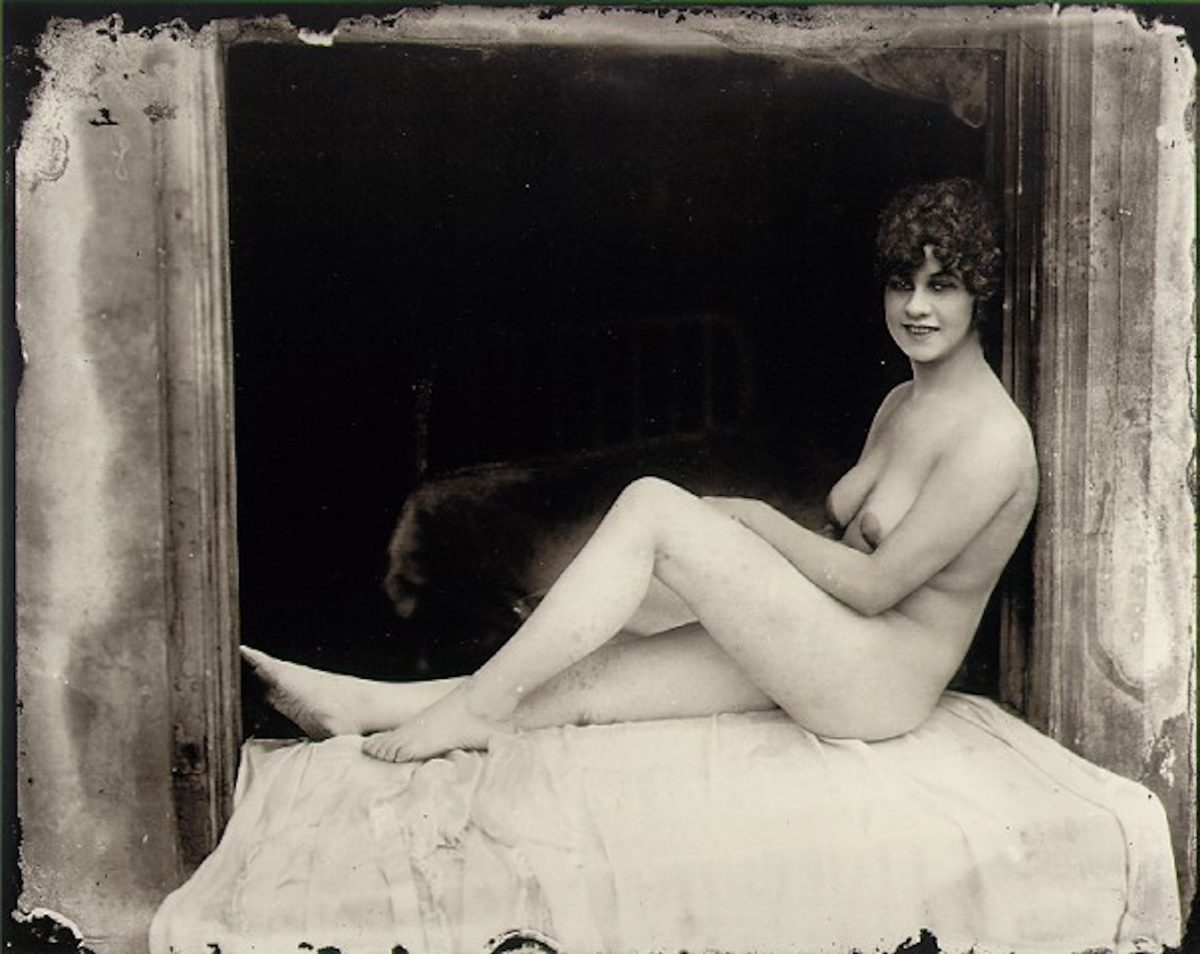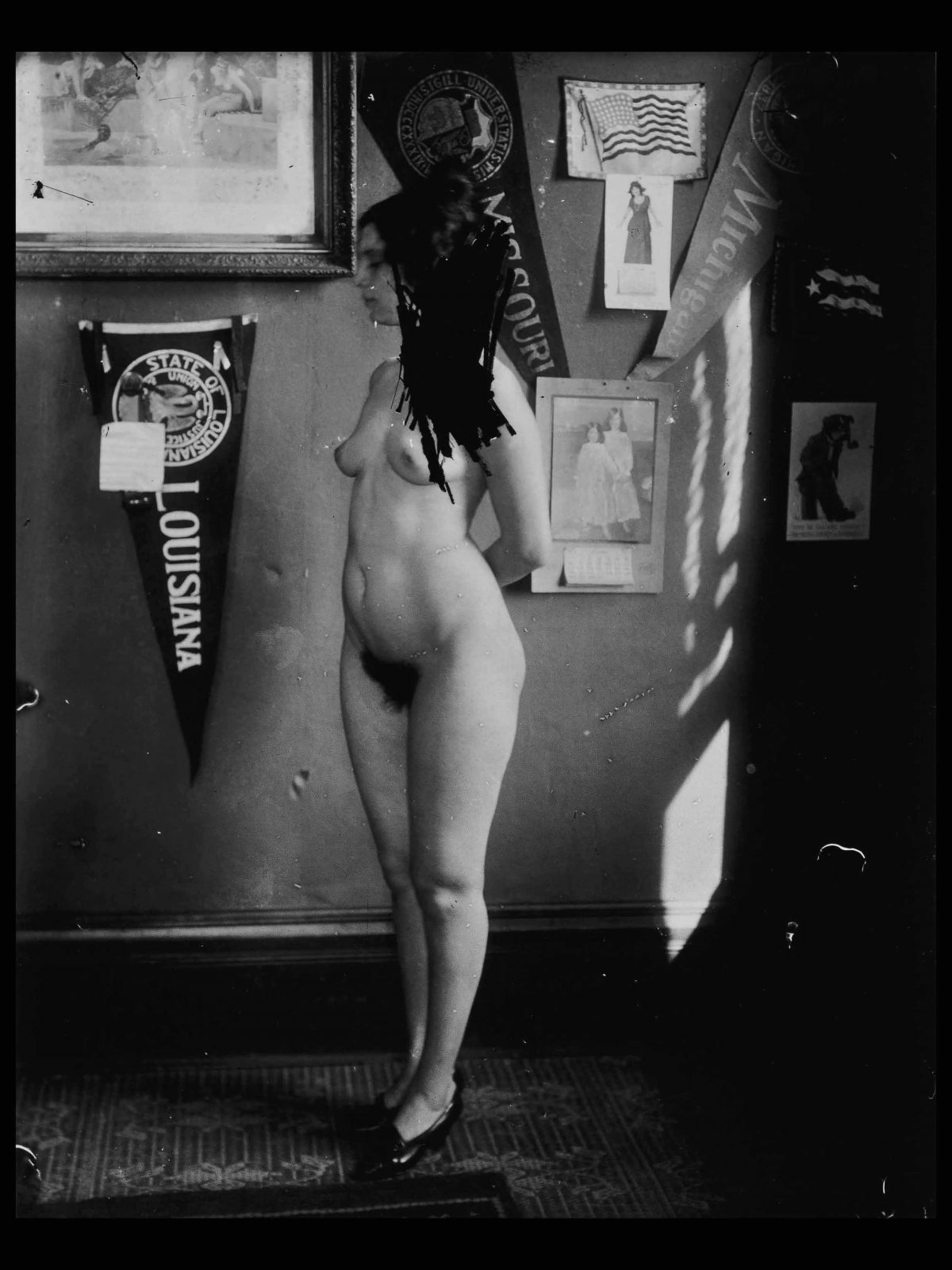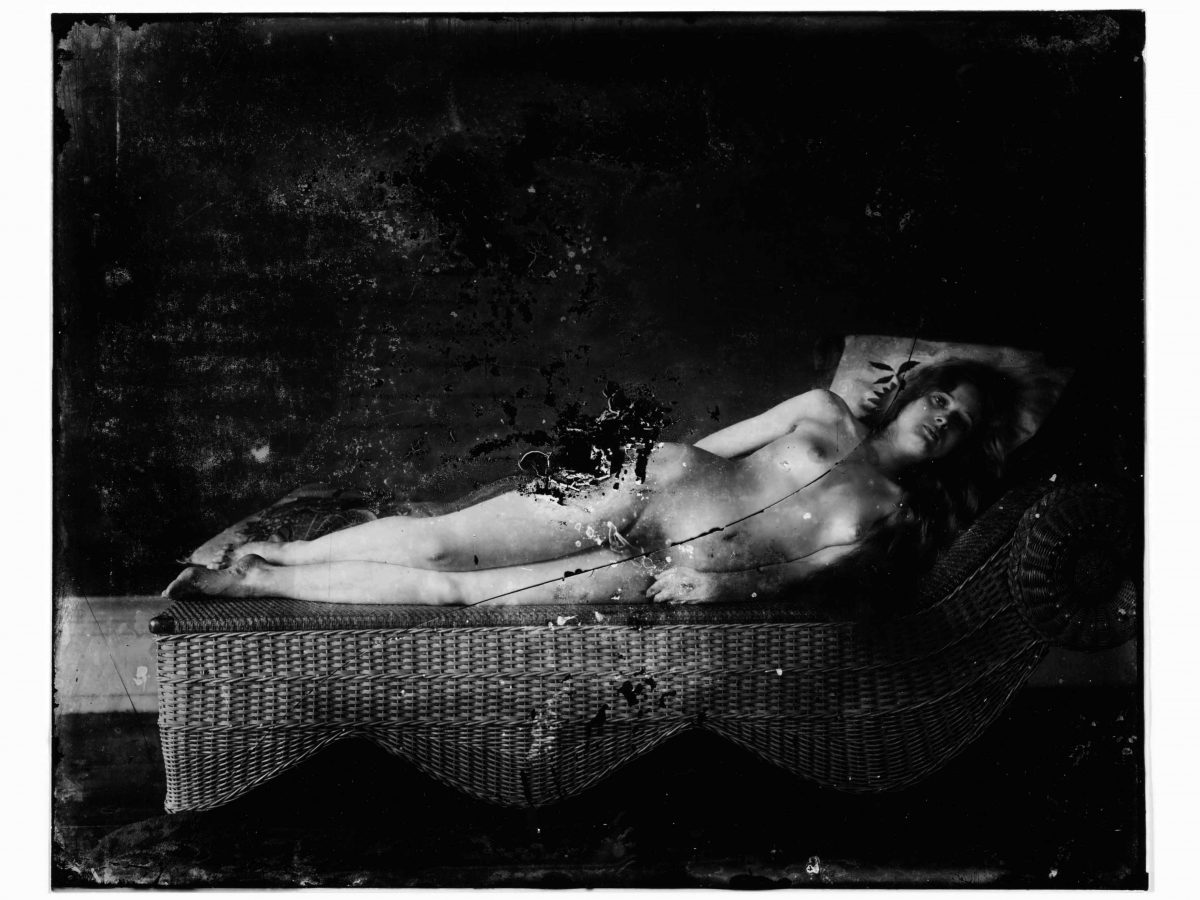In 1897, the city council of New Orleans, Louisiana, ordered prostitutes to operate in a zone of tolerance. The area became known as ‘Storyville’ after Alderman Sidney Story (whose idea it was). Comprised of 16 square blocks just off the French Quarter, Storyville was home to legalised prostitution from January 1, 1898 until November 12, 1917, when the United States Navy closed it for good as the country entered World War 1.
And you can buy one of the Bellocq’s prints for your own boudoir or as a gift at our prints shop. Click on a print to be taken there.
Men flocked to brothels like the city’s infamous Mahogany Hall, housed on Basin Street beneath castle-like turrets. Jelly Roll Morton (October 20, 1890 – July 10, 1941) was the house pianist and E. J. Bellocq’s surviving Storyville photographs of the bordello are evidence of the elegant furnishings, glittering chandeliers and Tiffany stained-glass windows.
Bellocq’s pictures are sublime. They are, as Susan Sontag wrote, “far from the staged sadomasochistic high jinks of the bound women offering themselves up to the male gaze”.
Bellocq is described as being “dwarfish, hunchbacked, or even a moderate hydrocephalic who hid his deformity under his hat”. Another saw: “This vast forehead going up and coming to a point, and it seems to me his face widened out as it came down to the chin, so you got a sort of pyramid effect.” One New Orleans resident said: “Oh, I would say he was five feet. He was short. And his sitdown place was very wide. And he had very narrow shoulders.” Dan Leyrer, another photographer in New Orleans at the time, said Bellocq “had a terrific accent and he spoke in a high-pitched voice, staccato-like, and when he got excited he sounded like an angry squirrel.” He “would go walking around with little mincing steps…he waddled a little bit like a duck.”
With his large noggin and backside, his signature hat and short legs, Bellocq could have passed as Toulouse-Letrec, the diminutive French painter and habitual employer of on-the-clock sex who incorporated the prostitutes he met into his art. Fellow painter Édouard Vuillard later said that while Toulouse-Lautrec did engage in sex with prostitutes but “the real reasons for his behavior were moral ones … Lautrec was too proud to submit to his lot, as a physical freak, an aristocrat cut off from his kind by his grotesque appearance. He found an affinity between his own condition and the moral penury of the prostitute.” His looks, and other’s reactions to them, gave him knowledge of other human beings.
And so too Bellocq, who preferred the camera to the paint brush as a means to record women.
Working as a commercial photographer, he occasionally took pictures for the Archdiocese of New Orleans. Why he began to take photos of woman working in Storyville between 1911 and 1913 is not known. Was his desire to record driven by a moral purpose, as we are told was the way with Toulouse-Lautrec? We should be inclined to say “yes”. The subjects of his portraits look relaxed in front of the camera, being themselves in their homes. Some of the nudes are scratched. Was that done to hide the identity of his subjects? Whatever the reasons, his touch is light and the pictures enduring. Bellocq’s photographs belong to the world of “anti-formulaic, anti-salacious sympathy for ‘fallen’ women,” wrote Sontag. “That they are part of a series is what gives the photographs their integrity, their depth, their meaning. Each individual picture is informed by the meaning that attaches to the whole group.”
Whatever the reasons for the portraits and the women’s willingness to sit for them, we might never have seen Bellocq’s work had it not been for a collector.
Nan Goldin tells us:
Without Friedlander’s intervention, no one would know the work of E.J. Bellocq. A frequent visitor to the Crescent City to photograph the jazz scene, Friedlander was friends with a compulsive collector named Larry Borenstein, who owned an art gallery in the ‘50s. One night Borenstein showed Friedlander a number of the glass plates, which were among his collections and from which he had made some ordinary 8 x 10 prints that he sold around town for about $100 apiece…so in 1966 he bought the plates from Borenstein. When one thinks of the massive amount of negatives and glass plates one comes across in flea markets and thrift shops, Friedlander’s power of discrimination becomes even more admirable…
In 1970, Bellocq’s work went on display at New York’s Museum of Modern Art with an accompanying book, Storyville portraits : photographs from the New Orleans red-light district, circa 1912″.
Again, we turn to Sontag, who wrote of that text: “The book became, deservedly, an instant classic. So much about these pictures affirms current taste: the low-life material: the near mythic provenance (Storyville); the informal, anti-art look, which accords with the virtual anonymity of the photographer and the real anonymity of his sitters; their status as objets trouves, and a gift from the past. Add to this what is decidedly unfashionable about the pictures: the plausibility and friendliness of their version of the photographer’s troubling, highly conventional subject. And because the subject is so conventional, the photographer’s relaxed way of looking seems that much more distinctive.”
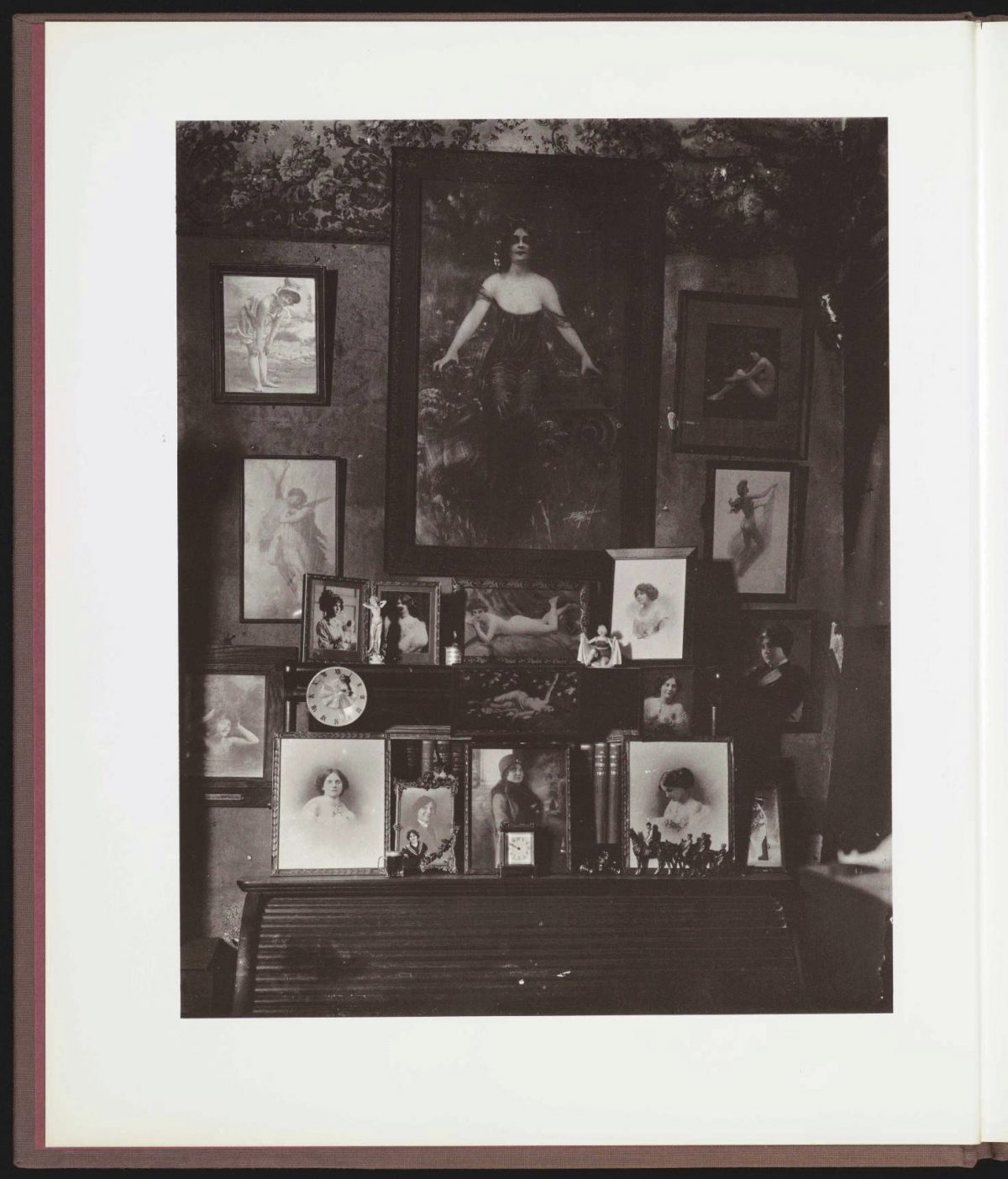
Via Moma
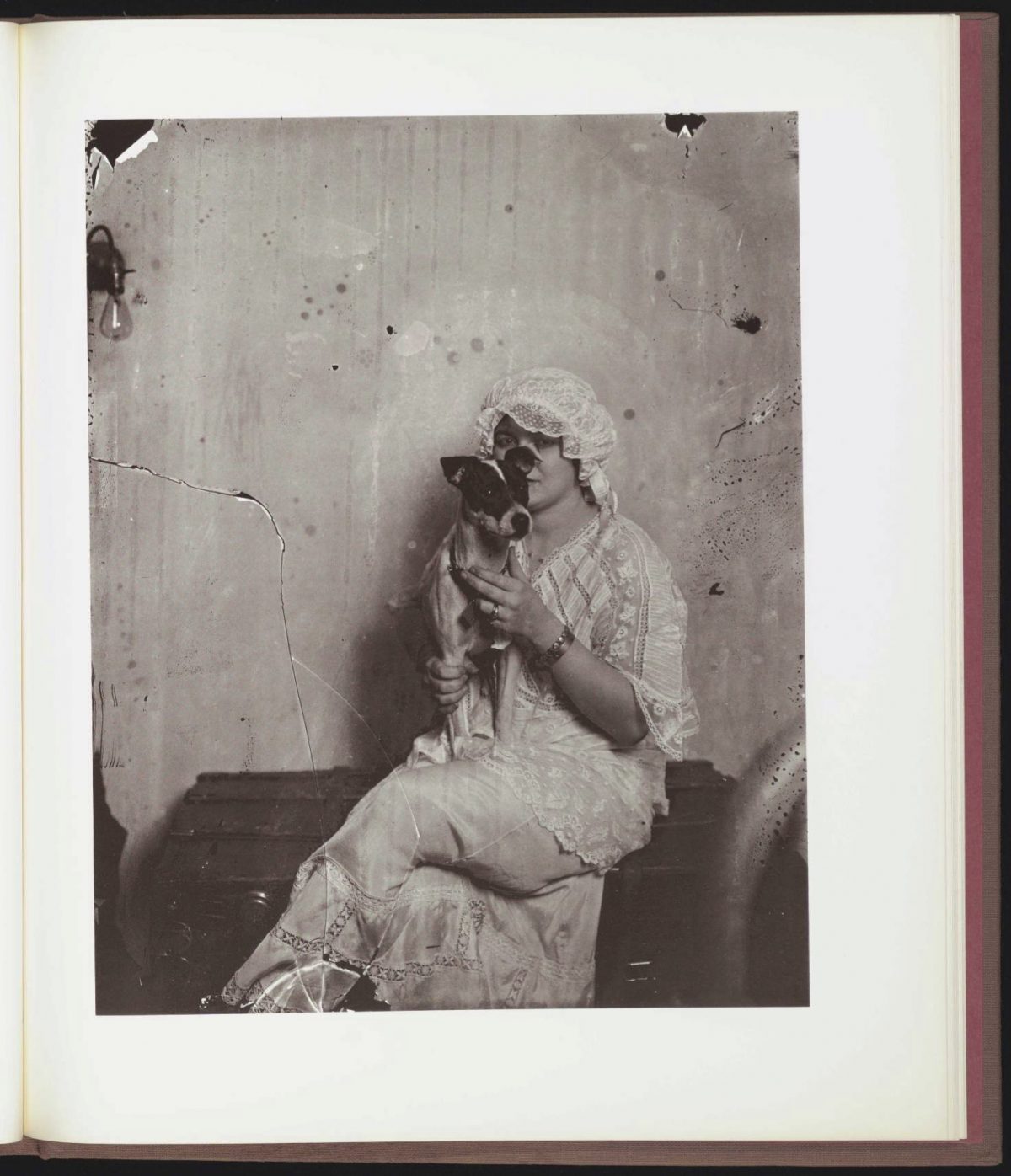
Via Moma
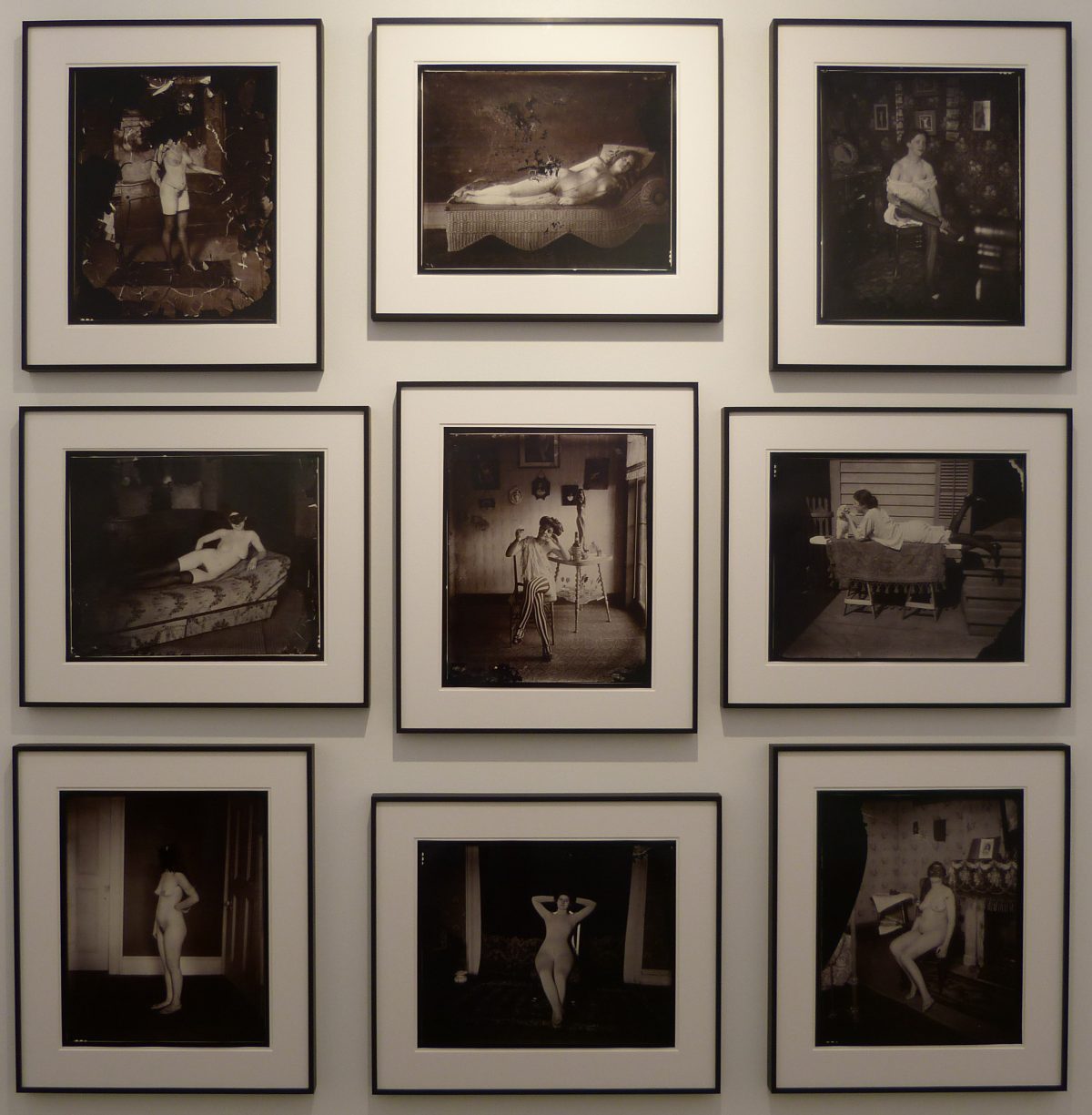
1911-1913)Via: Lee Friedlander and John Szarkowski, E.J. Bellocq Storyville Portraits, Little Brown & Co., 1970.
Would you like to support Flashbak?
Please consider making a donation to our site. We don't want to rely on ads to bring you the best of visual culture. You can also support us by signing up to our Mailing List. And you can also follow us on Facebook, Instagram and Twitter. For great art and culture delivered to your door, visit our shop.
